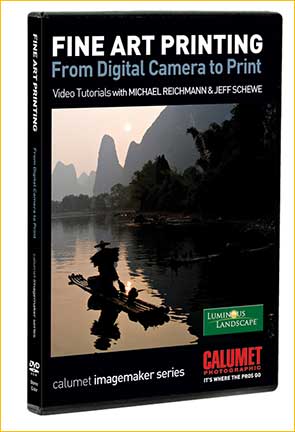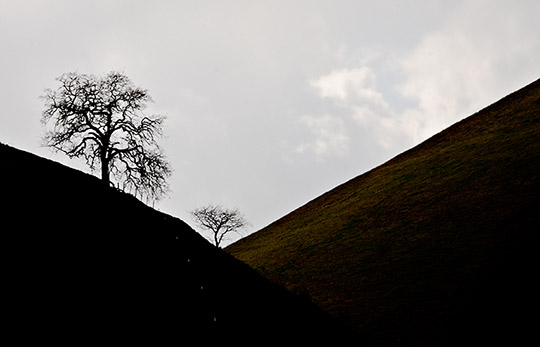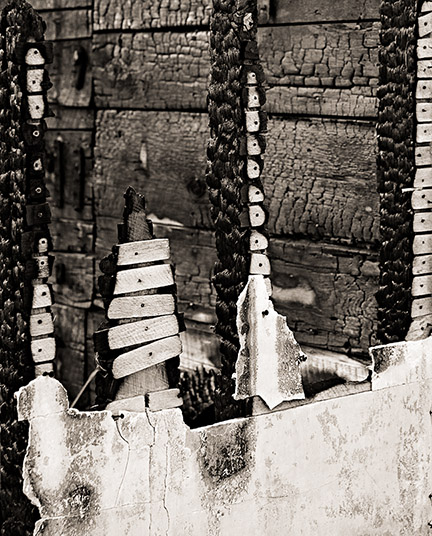
Probably no aspect of contemporary photography gives me as much pleasure as exploring the different types of papers available. Whereas in the chemical darkroom days we were limited to just a handful of papers, especially for colour printing, now there are literally hundreds of papers available.
The most interesting papers are cotton rag and alpha-cellulose papers designed (till now) for matte ink printing. It is largely because of these papers that most fine art printers use matte. Glossy papers till now have been resin coated (plastic), and with few exceptions just don’t look and feel as nice as do matte papers, especially for fine art applications. But, glossy papers can reproduce denser blacks because they use gloss rather than matte black inks.
So there’s the quandary. If you want prints that feel good to the hand, either individually or in a portfolio, then matte papers are the likely choice. But the blacks aren’t as deep. If the prints are for commercial use then glossy papers are usually preferred. Frankly, one can’t usually tell the difference between matte and glossy papers when a print is behind glass, (except for the deeper blacks) but fine art photographers typically still prefer to use matte papers because that’s now the way that buyers in a photo gallery usually encounter prints. They are handled individually in a portfolio, and thus the tactile aspects of the print are just as important, if not more so, than the image’s dMax.
Early in 2006, I published a review here of a new paper from Crane & Co called Museo Silver Rag. Both reviewer Pete Myers and I were quite taken with this paper. Then not long after, at the PMA show in Orlando in late February, I was shown a brand new paper from Hahnemuhle called Fine Art Pearl. It was being displayed side by side with the same print on Museo Silver, and the difference were astonishing.
In late March I received a sample box of paper from Hahnemuhle for testing. Here are my initial impressions.

On a print containing an image like the one above, with large black areas as well as areas with brilliant highlights
Hahnemulah Fine Art Pearl will be found to be a very attractive choice.
____________________________________________________________________
The Specs
This is a 100% lignin free alpha-cellulose paper. It is internally buffered, has a whiteness of 105%, and a dMax of 2.88. It is, of course, acid free. Its weight is 285GSM and it will come in all standard sheet and roll sizes. It is designed for use with both pigment and dye based inks, and is specifically designed for use with glossy inks.
This paper will become broadly available through dealers in the US in late April, 2006. Pricing will be roughly comparable to that company’sPhoto Rag Satin, about $125 for a 50 sheet box of 11X17″.
____________________________________________________________________
Subjective Evaluation

Clearly, there has been some breakthrough by paper makers in the process of making real papers that can accept glossy inks properly, as opposed to RC (plastic) printing papers.Crane Museo Silver Rag(MSR) was the first, but now hard on its heels comes HahnemuhleFine Art Pearl. It’s therefore appropriate to compare them, as they are the only two entrants to come to market thus far.
I did my testing both with a profile that I made myself using aGretag Macbeth Eye-One spectrophotometer with Eye-One Match profiling software, as well as with both colour and B&W profiles from Colorbyte for the Imageprint RIP. Incidentally, Colorbyteis to be commended for producing profiles for new papers even before they reach the public. Sample and comparison prints were made on an Epson 4800.
The first thing that will grab your attention when you hold a piece of FAP, as I’ll call it from now on, is that it has the look and feel of a traditional N surface silver gelatin photographic paper. The weight, the texture, and the surface are very similar indeed. By comparison, MSR feel and looks a bit like thin cardboard.
The other comparison that one will make instantly between these two papers is the paper white. The FAP is much whiter. Consequently, blacks look blacker when the same image is printed on both and they’re held side by side.
I also find the surface of FAP to have a much flatter texture than that of MSR. MSR seems to have a sheen which catches the eye at certain angles. FAP does have a bit of a sheen as well, but only when compared to a matte paper likePhoto Rag.
Of course, it’s impossible to show paper quality on a web site, so I won’t belabour the point much further. You’re going to have to see it for yourself once it starts shipping in late April, ’06. This is a very exciting paper. Many photographers that have been using matte inks for their fine art work may well now wish to consider using glossy black ink instead on FAP, because of the extra dMax.
HahnemuhleFine Art Pearl doesn’t quite have the feel of a fine art cotton rag paper likePhoto Rag, but instead it has the look and feel of a traditional silver gelatine paper. For many photographers, it will be a very welcome addition to their paper arsenal.
April, 2006
____________________________________________________________________
Update:
Since first publication a few people have written asking whether FAP uses optical brighteners. There is no official word, but, I’d bet dollars to donuts that there are. It is usually safe to assume that unless a manufacturer specifically states that a paperdoes nothave OB, that it does.
Because OBs fade over time, thus leading to some eventual image deterioration, especially when a a print is displayed rather than in dark storage, anyone looking for ultimate archival permanence will likely want to avoid papers containing OB. But, of course, these are never as bright and white as papers that have them.
Also, I have now had a chance to measure the Dmax of FAP, and my measurement differs from that provided by Hahnemuhle. They are claiming a dMax of 2.88, while I measure 2.08, quite a difference. (My measurements was done with anEye One spectrophotometer and Babel Color measurement software). More on this, I’m sure, in the weeks ahead.
Revised and edited August 2016
You May Also Enjoy...
Monochrome Monarchs
Please use your browser's BACK button to return to the page that brought you here.
